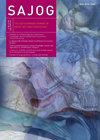Prevalence of and sociodemographic factors associated with antenatal depression among women in Limpopo Province, South Africa
IF 0.3
Q4 OBSTETRICS & GYNECOLOGY
South African Journal of Obstetrics and Gynaecology
Pub Date : 2022-12-14
DOI:10.7196/sajog.2022.v28i2.2097
引用次数: 2
Abstract
Background. Pregnancy-related depression is a common psychiatric disorder and a major public health concern in both developed and developing countries, but the disorder receives little attention and few resources, particularly in developing countries.Objectives. To assess the prevalence of antenatal depression and its sociodemographic risk factors among pregnant women in Limpopo Province, South Africa.Methods. This was a cross-sectional descriptive study conducted in a district hospital from 8 March to 12 April 2021. Consecutive women attending antenatal care services during the data collection period were included in the study. The Edinburgh Postnatal Depression Scale was used to assess depression symptoms.Results. The prevalence of antenatal depression was 31% (95% confidence interval 26.1 - 36.3). Being unmarried, being a smoker, being without financial support from a partner, having a violent partner and having a less-educated partner were significant predictors of antenatal depression in these women.Conclusion. Nearly one-third of the pregnant women in our study had depressive symptoms. The important predictors of antenataldepression included being unmarried, smoking, lack of financial support from a partner, intimate partner violence and having a lesseducated partner. These findings may help healthcare workers to identify women at risk early, so that support can be offered during pregnancy and childbirth.南非林波波省妇女产前抑郁症患病率及相关社会人口因素
背景妊娠相关抑郁症是一种常见的精神疾病,在发达国家和发展中国家都是一个主要的公共卫生问题,但这种疾病很少受到关注,资源也很少,尤其是在发展中国家。目标。评估南非林波波省孕妇产前抑郁症的患病率及其社会人口统计学风险因素。方法。这是一项于2021年3月8日至4月12日在地区医院进行的横断面描述性研究。在数据收集期间连续参加产前护理服务的妇女被纳入研究。爱丁堡产后抑郁量表用于评估抑郁症状。后果产前抑郁症的患病率为31%(95%置信区间26.1-36.3)。未婚、吸烟、没有伴侣的经济支持、有暴力伴侣和受教育程度较低的伴侣是这些女性产前抑郁症的重要预测因素。结论在我们的研究中,近三分之一的孕妇有抑郁症状。出生前压力的重要预测因素包括未婚、吸烟、缺乏伴侣的经济支持、亲密伴侣暴力和伴侣受教育程度较低。这些发现可能有助于医护人员尽早识别有风险的女性,以便在怀孕和分娩期间提供支持。
本文章由计算机程序翻译,如有差异,请以英文原文为准。
求助全文
约1分钟内获得全文
求助全文
来源期刊

South African Journal of Obstetrics and Gynaecology
Medicine-Obstetrics and Gynecology
CiteScore
0.40
自引率
0.00%
发文量
5
审稿时长
15 weeks
期刊介绍:
The SAJOG is a tri-annual, general specialist obstetrics and gynaecology journal that publishes original, peer-reviewed work in all areas of obstetrics and gynaecology, including contraception, urogynaecology, fertility, oncology and clinical practice. The journal carries original research articles, editorials, clinical practice, personal opinion, South Africa health-related news, obituaries and general correspondence.
 求助内容:
求助内容: 应助结果提醒方式:
应助结果提醒方式:


